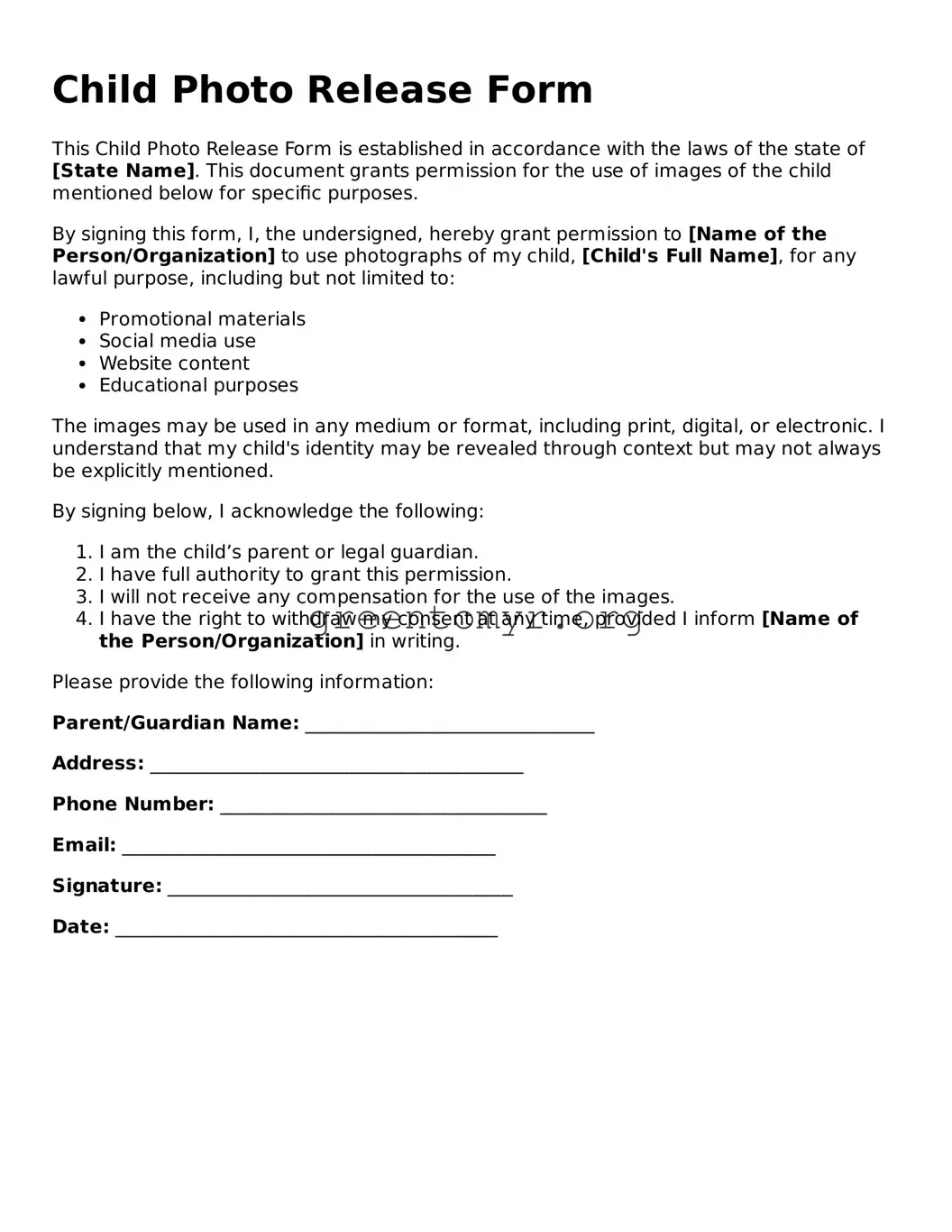Child Photo Release Form
This Child Photo Release Form is established in accordance with the laws of the state of [State Name]. This document grants permission for the use of images of the child mentioned below for specific purposes.
By signing this form, I, the undersigned, hereby grant permission to [Name of the Person/Organization] to use photographs of my child, [Child's Full Name], for any lawful purpose, including but not limited to:
- Promotional materials
- Social media use
- Website content
- Educational purposes
The images may be used in any medium or format, including print, digital, or electronic. I understand that my child's identity may be revealed through context but may not always be explicitly mentioned.
By signing below, I acknowledge the following:
- I am the child’s parent or legal guardian.
- I have full authority to grant this permission.
- I will not receive any compensation for the use of the images.
- I have the right to withdraw my consent at any time, provided I inform [Name of the Person/Organization] in writing.
Please provide the following information:
Parent/Guardian Name: _______________________________
Address: ________________________________________
Phone Number: ___________________________________
Email: ________________________________________
Signature: _____________________________________
Date: _________________________________________
